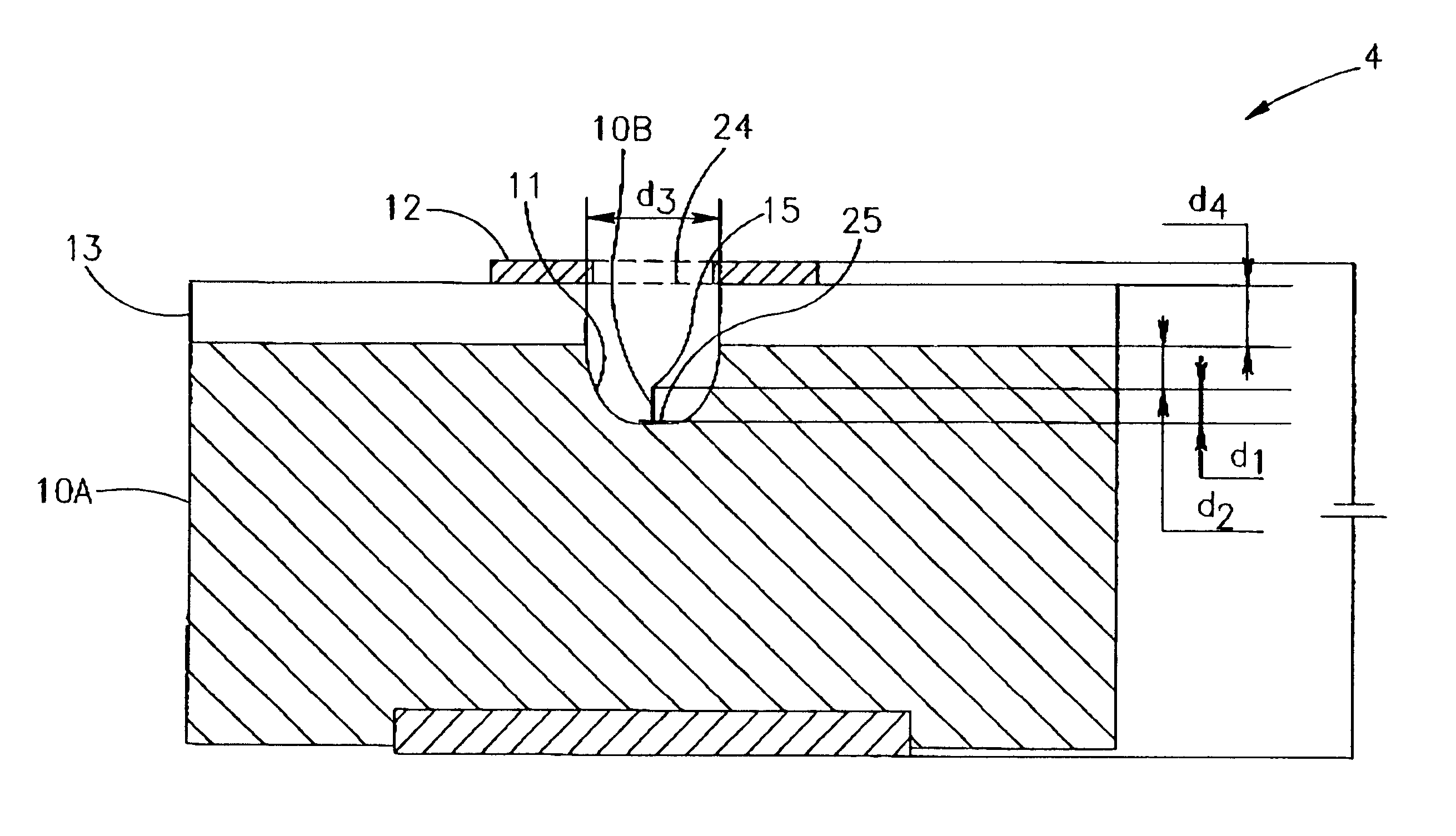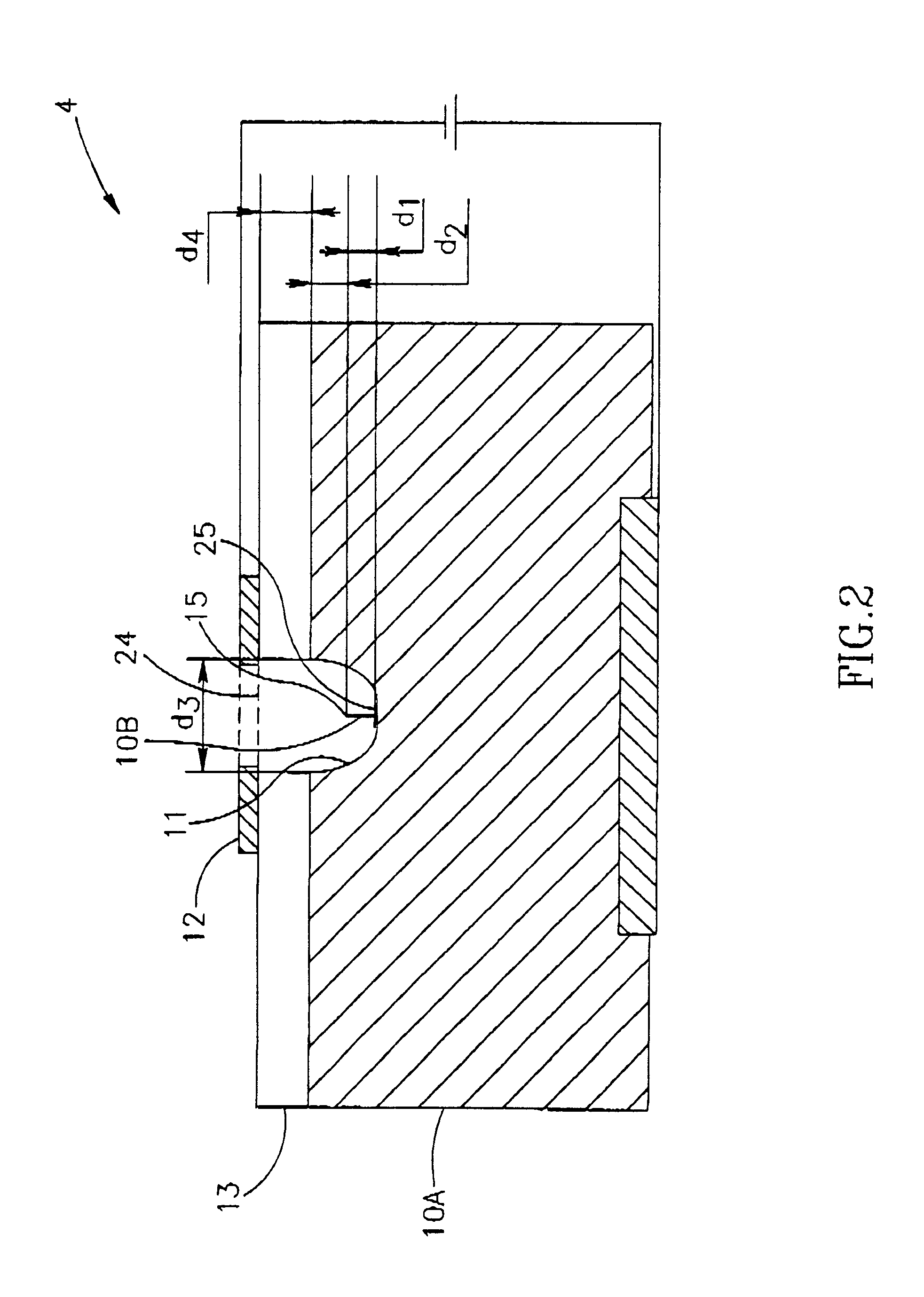Nanotube-based electron emission device and systems using the same
a technology of electron emission device and nanotube, which is applied in the direction of material analysis using wave/particle radiation, instruments, heat measurement, etc., can solve the problems of complex operation of cfe in a stable manner, the angular divergence of beams is minimal, and the tendency of ions to accelerate towards the emitter is significantly decreased
- Summary
- Abstract
- Description
- Claims
- Application Information
AI Technical Summary
Benefits of technology
Problems solved by technology
Method used
Image
Examples
Embodiment Construction
Referring to FIG. 1, there is schematically illustrated a scanning electron microscope, generally designated 1, constructed according to one embodiment of the invention, for inspecting a sample 2 or for processing it with an electron beam. The microscope 1 comprises such main constructional parts as an electron source device 4 and an electron beam column 6 that directs a primary beam towards the sample 2 and directs secondary and back-scattered electrons towards a detector means 8. The latter is appropriately accommodated in the path of electrons knocked out from the sample 2 as a result of its interaction with a primary electron beam.
As more specifically illustrated in FIG. 2, the electron source device 4 according to the present invention comprises a single nanotube or nanotube bundle 10B located in a crater 11 formed in a conducting layer 10A, and an anode-electrode 12. A nanotube 10B is formed on a metal catalyst 25 on the bottom of the crater 11, such that a tip 15 of the nanot...
PUM
 Login to View More
Login to View More Abstract
Description
Claims
Application Information
 Login to View More
Login to View More - R&D
- Intellectual Property
- Life Sciences
- Materials
- Tech Scout
- Unparalleled Data Quality
- Higher Quality Content
- 60% Fewer Hallucinations
Browse by: Latest US Patents, China's latest patents, Technical Efficacy Thesaurus, Application Domain, Technology Topic, Popular Technical Reports.
© 2025 PatSnap. All rights reserved.Legal|Privacy policy|Modern Slavery Act Transparency Statement|Sitemap|About US| Contact US: help@patsnap.com



